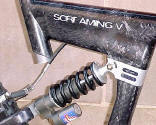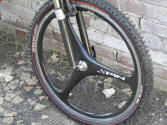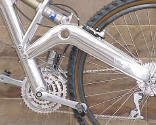A r t
Many folks won't necessarily see the "art" of the mountain bike, preferring to think of it strictly as a utilitarian item. As you look through the pictures of the bikes, I believe you will begin to see the art, whether it is as obvious as a paint scheme or as subtle as the radius of a fillet, it is there.




T e c h n o l o g y
The technology is much more obvious when looking at the history of mountain biking. It started with 1930's Schwinn balloon-tired bikes with a mish-mash of converted touring bike and motorcycle parts and has progressed to bikes with five inches of travel front and rear, hydraulic disc brakes and 27 speeds. Along the way, there have been many trends and more than a few mis-steps.




From Klunkers.......

In the mid-1970's, the first "mountain bikes" were made from old discarded balloon-tire bikes. The Schwinn frames, especially the straight down tube Excelsior models, were the most sought after frames for their strength. The horn tanks and fenders were stripped from the bikes and gears and brakes were often added. Most of the Marin County crowd referred to these bikes a "Klunkers" and the act of riding them was "Klunkin'". These bikes represent the earliest roots of the sport
..........to Carbon

Carbon fiber has often been hailed as a "wonder material". It can be both light and strong and has the ability to be laid up in layers. Each layer has a "grain" and can be laid up in specific ways to be rigid in one direction and flexible in another direction.

